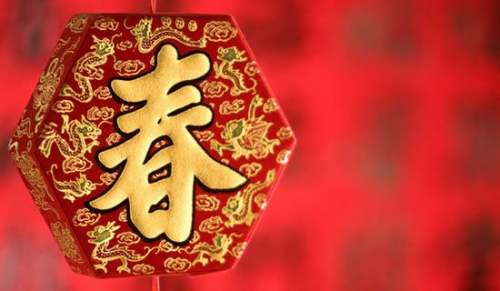中国春节由来英语版100
中国春节由来英语版介绍怎么写呢?让我们一起去学习一下吧!

The Chinese New Year
Editor: It's true that the January 1st has gone away, but what we celebrate now is ano-ther new year---the Chinese Spring Festival, which is calculated as the Chinese new year in the lunar calendar. It's coming! Happy Chinese new year to all of you! In order to give you a vivid concept of what this festival is like and what you should to during this period, we make this special feature to give you detailed information. You can find all information about this festival here.
Brief Introduction of the Spring Festival
Chinese New Year or Spring Festival (simplified Chinese: 春节; traditional Chinese: 春節; pinyin: Chūnjié), or the Lunar New Year (simplified Chinese: 农历新年; traditional Chinese: 農曆新年; pinyin: Nónglì xīnnián), is the most important of the traditional Chinese holidays. It is an important holiday in East Asia. The festival traditionally begins on the first day of the first lunar month (Chinese: 正月; pinyin: zhēng yuè) in the Chinese calendar and ends on the 15th; this day is called the Lantern festival (simplified Chinese: 元宵节; traditional Chinese: 元宵節; pinyin: yuánxiāojié).
Chinese New Year's Eve is known as Chúxì (除夕). Chu literally means "change" and xi means "Eve".
Celebrated in areas with large populations of ethnic Chinese, Chinese New Year is considered a major holiday for the Chinese and has had a strong influence on the new year celebrations of its geographic neighbours, as well as cultures with whom the Chinese have had extensive interaction. These include Koreans, Mongolians, Nepalese, Bhutanese, Vietnamese, and formerly the Japanese before 1873. In Singapore, Indonesia, Malaysia, the Philippines, Thailand, and other countries with significant Chinese populations, Chinese New Year is also celebrated, largely by overseas Chinese, but it is not part of the traditional culture of these countries.
Kids showing the Spring Festival Couplets
The New Year Date
The lunisolar Chinese calendar determines Chinese New Year dates. The calendar is also used in countries that have adopted or have been influenced by Han culture (notably the Koreans, Japanese and Vietnamese) and may have a common ancestry with the similar New Years festivals outside East Asia (such as Iran, and historically, the Bulgars lands).
Chinese New Year starts on the first day of the new year containing a new moon (some sources include New Year's Eve)[citation needed] and ends on the Lantern Festival fourteen days later. This occurs around the time of the full moon as each lunation is about 29.53 days in duration. In the Gregorian calendar, Chinese New Year falls on different dates each year, a date between January 21 and February 20. This means that the holiday usually falls on the second (very rarely third) new moon after the winter solstice. In traditional Chinese Culture, lichun is a solar term marking the start of spring, which occurs about February
【中国春节由来英语版100】相关文章:
感恩节的由来英语版10-01
中国过年习俗的由来02-10
春节手抄报英语版12-02
中国女生节的由来08-15
对外介绍中国成语的由来:害群之马08-17
中国母亲节的由来11-29
春节手抄报内容:春节的由来07-30
对外介绍中国成语的由来:对牛弹琴08-17
中国国庆节的由来是什么07-14
春节由来日记10篇01-25